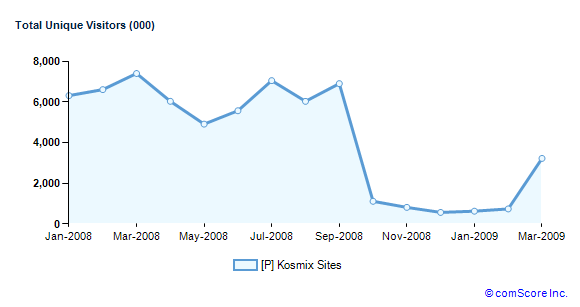Kosmix, the universal search engine that dynamically generates guides to search queries using dozens of different content sources, is quickly gaining momentum. According to today’s latest comScore numbers, the site has jumped up to 3.2 million monthly uniques in March – a 419% growth since February.
Kosmix is meant to serve as a search engine for when you want to get a quick overview of any topic (In some ways, its approach is similar to Mahalo’s). But unlike Mahalo, all ‘guides’ are built using search algorithms rather than human editors. Data is pulled from a variety of sources, including YouTube, Wikipedia, and news sites to generate each guide. This makes the engine very flexible, as it can attempt to build a page for any search query, but it has also can lead to some quirks – occasionally you’ll find items in a Kosmix page that seem out of place, which human editing would presumably avoid.
But for the most part it works well, and it’s growing quickly. The site began testing its universal search in a private alpha last summer but only began promoting it to the public in December, when it also announced it had closed a $20 million funding round led by Time Warner (the company has raised $55 million since 2005). And while its technology is primarily geared towards search, it is also flexible: last month it launched a personalized newspaper called Meehive, which uses the Kosmix engine.
Update: I’ve updated the image below to show Kosmix’s traffic over a longer period of time. Note the steep drop last year, when Kosmix switched from its old model as a vertical search engine for health, automobiles, and travel to the current site. It may be picking up quickly, but it still has a long ways to go before it reaches its past peak. Kosmix has clarified that the drop is due to a change in the way comScore counts its data. Before October, comScore treated RightHealth (which currently has 6.6M monthly uniques) as part of the Kosmix network, and now treats them as separate entities.

